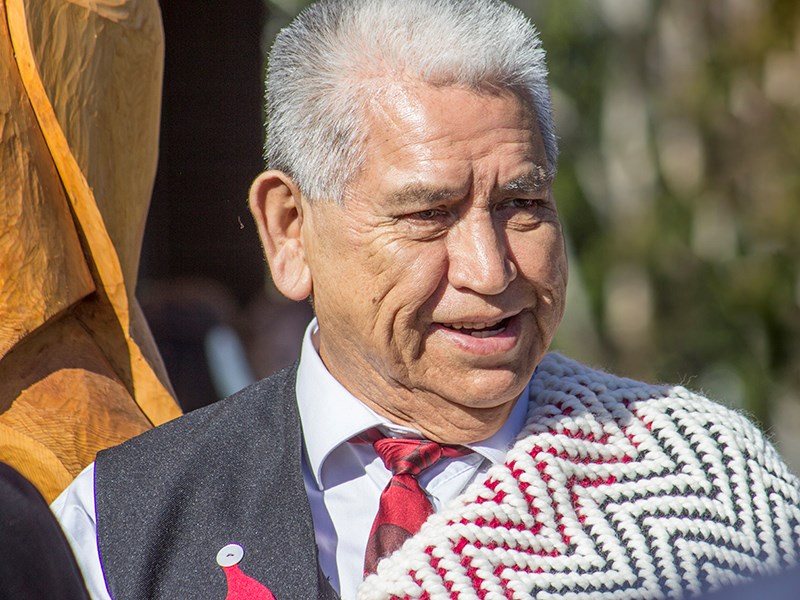A new map project undertaken by Tla’amin Nation elders and Powell River Historical Museum and Archives will be another step to ensure future generations of the nation’s people have access to its traditional language and culture.
For the past 40 years, Tla’amin elder Betty Wilson, a retired schoolteacher, has worked at teaching the traditional language to her students, Tla’amin and non-native.
“There is a lot of interest in just the language itself,” said Wilson.
With the idea that the community was wanting to know traditional names of places in the traditional territory, Wilson and the museum’s heritage manager Bert Finnamore began meeting to work on applying for federal funding. If successful, their goal was to pull together information and create interactive maps to be located at the museum and at the new Tla’amin governance house.
In July, Wilson and Finnamore found out they would receive $143,000 for the project from the federal Museum Assistance Program, which will be added to Tla’amin First Voice’s online electronic dictionary work and a project to produce an atlas of the area. The maps will provide locals and tourists with a better understanding of Tla’amin’s language and traditional territory, said Wilson.
Tla’amin hegus Clint Williams said the cultural preservation work being undertaken is invaluable.
“It’s kind of sad to say, but we are losing a lot of our elders who are fluent speakers and that’s scary,” said Williams. “There really isn’t any formal documentation.”
Wilson said that for the past 25 years instructors have been teaching school-age children the language at public school and she has taught classes in the community through Powell River Public Library. By teaching language classes through the library, Wilson discovered many non-native people wanted to learn the traditional names of various places in Powell River.
Added to that, Tla’amin youth were keen to connect with their ancestry by going on canoe journeys throughout the first nation’s traditional territory.
“That generated a lot of interest in our young people,” she said.
A lot of information about the traditional territory has already been collected as part of treaty negotiations work, but Wilson said the important stories and names will have to be brought together into one central database for the project to move forward. While the map is the end product, the process will be bringing together historical artifacts, elders’ stories and memories.
Wilson said she recognizes the project is under pressure because many of the people who will add to the rich depth of the work are themselves elderly.
“In the first year we’ll be gathering and we’ll have to start recording quickly,” said Wilson.
Williams said new records will be added to ones already collected during 20 years of preparation for treaty. He said he would like to see voices of the elders used in the interactive map to teach traditional names of locations.
“It would be amazing to hear those voices from years ago,” he said.
Williams added that the project will help in the already started process of archiving the language and will serve as an educational tool. He also said he applauds efforts being made and sees the projects as a celebration of the language and the acceptance that is out there.
“It is very nice to see,” said Williams. “There are only bits and pieces out there, so we’re trying to archive and present this to people at the museum and our new governance house.”
Finnamore said the project will benefit Tla’amin through preservation of knowledge of the places remembered by the elders.
“Current and future generations of Tla’amin will be culturally stronger because this traditional knowledge was preserved and made available,” he said.
Wilson said it would be hard to make a better case for funding that would enhance the understanding of first nation’s history. The project will also have significance for the museum, said Finnamore.
“Two of the great roles for museums in society today are cultural awareness and cultural understanding,” said Finnamore. “This project is about recognizing the culture that was here before European colonization. It will remind non-aboriginal communities and visitors to the region that the Tla’amin were here before them and that their traditional lands encompassed much more territory than they do today.”
Finnamore added that the project will also help assist the museum and Tla’amin to build a closer relationship significant in helping to preserve and present the heritage of the region in the future.



